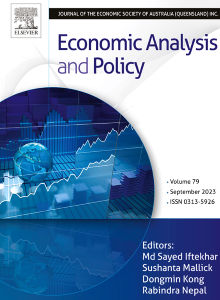How does the urban digital economy drive labor allocation in China?—A perspective of factor mobility between digital and non-digital enterprises
IF 7.9
2区 经济学
Q1 ECONOMICS
引用次数: 0
Abstract
Based on the perspective of labor factor mobility between digital and non-digital enterprises, this paper systematically explores the micro-mechanisms and impact of urban digital economy development on labor allocation. The results show that digital economic development significantly optimizes labor allocation between digital and non-digital enterprises within the same city and industry, but not across industries within the same city. This impact varies across regions and industries, with stronger effects in urban agglomerations, higher administrative-level cities, and capital-technology-intensive industries. The analysis of micro-mechanisms reveals that the urban digital economy drives the labor allocation through two key pathways: the employment "creation-destruction" effect and the labor productivity effect resulting from digital transformation. Additionally, the further analysis indicates that while the digital economy optimizes labor allocation between digital and non-digital enterprises, it decreases efficiency of labor allocation within non-digital enterprises. However, it does not significantly affect digital enterprises. This study contributes a comprehensive assessment of the labor allocation effects of the digital economy, providing empirical evidence and policy implications for leveraging labor allocation to release demographic dividends and promote Chinese-style modernization in the digital era.
求助全文
约1分钟内获得全文
求助全文
来源期刊

Economic Analysis and Policy
ECONOMICS-
CiteScore
9.80
自引率
9.20%
发文量
231
审稿时长
93 days
期刊介绍:
Economic Analysis and Policy (established 1970) publishes articles from all branches of economics with a particular focus on research, theoretical and applied, which has strong policy relevance. The journal also publishes survey articles and empirical replications on key policy issues. Authors are expected to highlight the main insights in a non-technical introduction and in the conclusion.
 求助内容:
求助内容: 应助结果提醒方式:
应助结果提醒方式:


